Join us for conversations that inspire, recognize, and encourage innovation and best practices in the education profession.
Available on Apple Podcasts, Spotify, Google Podcasts, and more.
Look for the following topics in the video, indicated by the ![]() onscreen icon, and click below to learn more.
onscreen icon, and click below to learn more.
|
|||||||||
One characteristic that is shared by all animals is that they are multicellular. Each cell that composes an animal is called a somatic or body cell — skin, muscle, and nerve cells are some examples. Each animal is composed of many different types of body cells that display amazing variation in form and function. However, despite this diversity, every body cell of an animal is identical when it comes to the organization of the hereditary material DNA. In the nucleus of each body cell, DNA is organized into chromosomes, which exist as chromosome pairs — with each member of a pair carrying the same set of genes.
This organization of chromosomes represents the animal’s genome and it carries all of the information necessary for reproducing another animal of that type. In terms of chromosome pairs, all animals of the same type are alike – that is, their body cells contain the same number and arrangement of chromosomes. The human genome, for example, consists of 46 chromosomes arranged in 23 pairs. The genome of a fruit fly consists of eight chromosomes arranged in four pairs.
What surprises many people is that every body cell of an animal — indeed, of any multicellular organism — carries its entire genome. Cells end up being different from one another because different genes within the genome direct their development.
The cell theory states that all cells arise from pre-existing cells. Body cells are formed when existing body cells divide. When this happens, it is necessary to pass the entire genome to the resulting two daughter cells in order to ensure that each gets a complete set of chromosomes. How does this happen? Prior to cell division, all of the chromosomes of the parent cell duplicate. Then, each chromosome is passed to each daughter cell. It is critical that this orderly and precise process happens every time a body cell divides. If it doesn’t, daughter cells won’t form properly (or at all) and this may have a negative impact on the entire organism. The scientific name for this process, which is illustrated in the animation below, is mitosis.
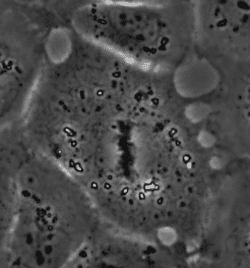
Mitosis
All animals lives begin when the sex cells of two parents unite to form the first body cell of the offspring — the fertilized egg. As important as this is in an animal life cycle, that single cell represents the only goal of sex cell production. After that first body cell forms, body cell reproduction is the process by which animals grow and develop, and by which new cells are produced and worn-out cells replaced. Body cell reproduction thus occurs throughout an animal’s life span and is the dominant form of cell reproduction during a life cycle.
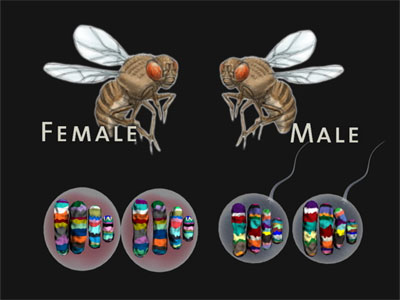
Fruit fly chromosomes.
Sex cells, or gametes, are unique to organisms that reproduce sexually. In animals and plants (fungi are somewhat different in this regard) there are two types of sex cells: male and female. The male sex cells are sperm, while the female sex cells are eggs. Sex cells are formed from special body cells that are typically located in sex organs. In most animals, sperm are formed in the testes of males, and eggs are formed in the ovaries of females.
Sex cells contain only half of the hereditary material present in the body cells that form them. This is important because male and female sex cells ultimately join to become a fertilized egg, which gives rise to a new organism, or offspring. In order for the offspring to resemble its parents, its first cell must receive the entire genome from its two parents. For humans, we know there are 46 chromosomes in body cells existing as 23 pairs. A fertilized egg must therefore contain this same number and arrangement. In an elegant process called meiosis, each sex cell receives one member of each chromosome pair—23 total. When sperm fertilizes egg, these singles unite to reform pairs, with half the genome coming from each parent. With a few exceptions, this pattern holds true for all sexually reproducing organisms.
Sex cells are produced from special body cells that contain the entire genome. The process by which the genome is halved is very precise — it’s not just a matter of randomly dividing the chromosomes into two sets. The process involves two cell divisions. Before the first occurs, all of the chromosomes are duplicated just as they are in body cell reproduction, but what happens next is different: the two duplicated strands remain attached to each other as the members of each chromosome pair move alongside each other. During the cell division that follows, only one member of each pair is transferred to each daughter cell—this is where the number of chromosomes is halved. The two strands of each chromosome are then separated during the second cell division, still maintaining half the number that existed in the parent cell. This results in four daughter cells — sperm or egg — that contain one member of each chromosome pair. This process is called meiosis.
Sex cell production ensures that the genome is maintained between parent and offspring generations. Occasionally, this process goes awry with chromosome pairs not lining up or not separating. The consequences are almost always harmful, and frequently lethal to potential offspring. A successful animal life cycle therefore depends on successful sex cell production.
There is another consequence to sex cell production that has a profound impact on the populations involved. Unlike body cell production, where the daughter cells are identical to parent cells, fertilized eggs result from genetic material from two different parents. Furthermore, each of these parents is only able to pass on half of its genome. The mixing and matching of half sets of chromosomes results in the astounding diversity we see in the living world. For example, we can see “parts” of both our parents when we look in the mirror. Similarly, a litter of puppies will reflect the size and coloration of both parents. The significance of this is explored in Session Five: Variation, Adaptation, and Natural Selection.
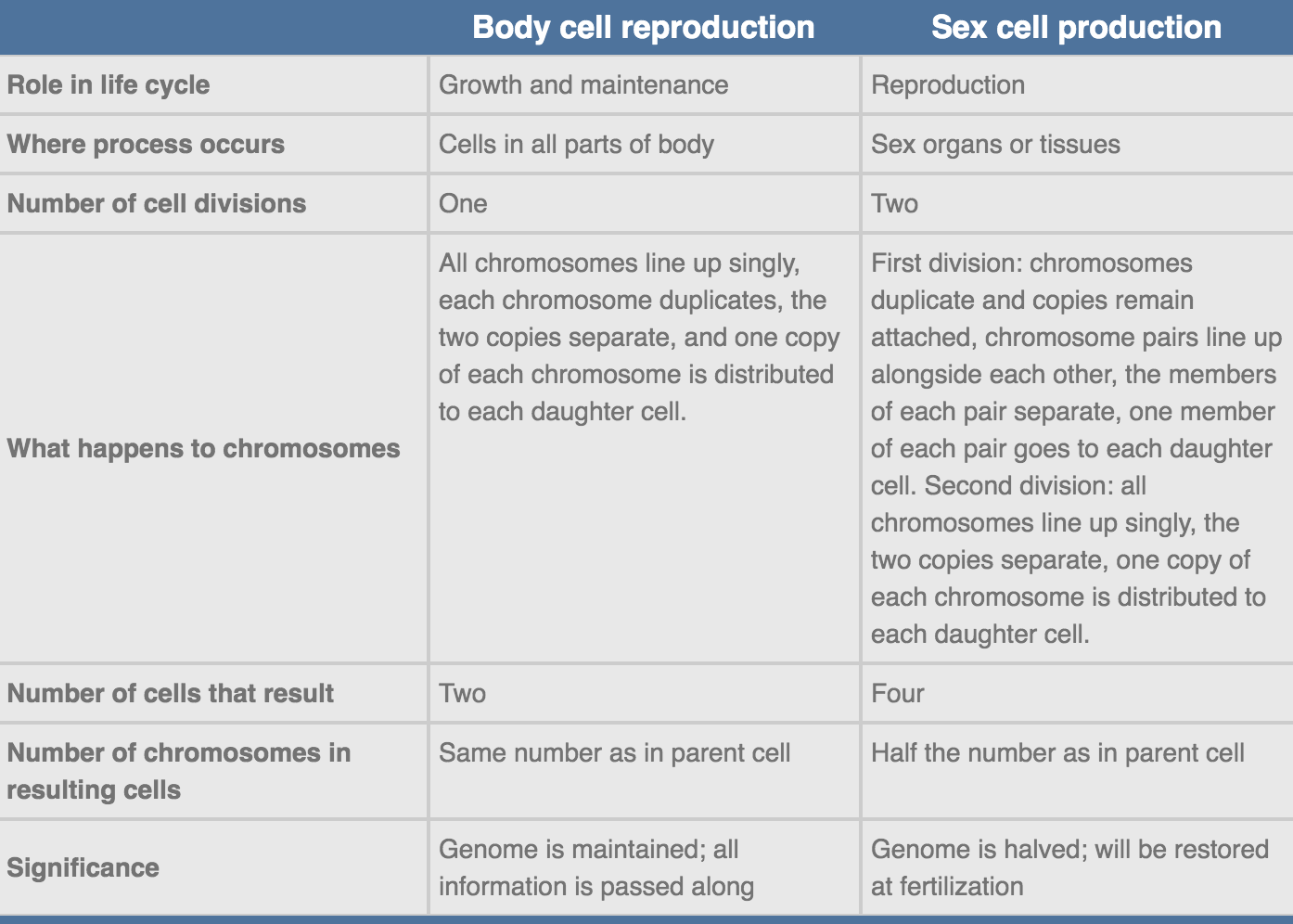
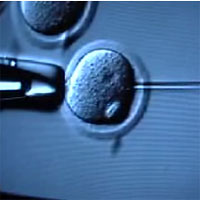
DNA inserted into egg for cloning
Cloning is a type of reproduction where the offspring is genetically identical to the parent. Cloning has become a topic that periodically receives attention in the news, with most people correctly understanding it to be a type of reproductive technology. However, cloning occurs all the time in nature. Not all organisms reproduce sexually. In fact, most single celled organisms reproduce asexually and many plants and animals can reproduce asexually as well. How does this occur? In these organisms, clones are formed in the same way that body cells are formed: The entire genome in a parent cell is duplicated and passed to two daughter cells, resulting in two identical individuals. In this way, body cells are actually clones of one another. While this can be advantageous in terms of not having to spend energy producing sex cells or locating a mate, the offspring lack the genetic variation observed in sexually reproducing organisms.
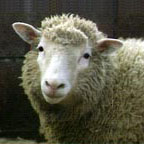
Dolly, the cloned sheep
In 1998, the world learned of the first successful example of a mammal cloned from an adult cell. This was Dolly, undoubtedly the world’s most famous sheep. Dolly was formed by extracting a donor cell from an adult sheep and implanting it into an unfertilized sheep egg that had its DNA removed. The donor cell, with its DNA-containing nucleus, was stimulated by pulses of electricity to induce it to fuse with the egg cell. The result was an egg that contained the entire genome of the adult donor — without ever involving the process of sex cell production and fertilization. Under specific conditions, this cell began to divide, and the resulting embryo was implanted into the uterus of a surrogate mother sheep. Dolly was the result. This is essentially the same process used for other cloning endeavors.
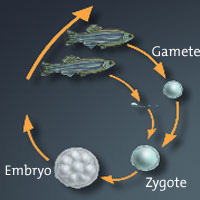
Egg and life cycle
When we talk about an egg, we’re usually referring to the kind that you can buy at a supermarket — a chicken egg. The word “egg,” however, means something different in biology. The scientific definition of the word “egg” is the female sex cell or ovum, also called a gamete. The fertilized egg, also known as the zygote, is formed when sperm, the male gamete, fuses with the egg, the female gamete.
“Egg” also refers to the physical structure produced by many animals that houses a developing embryo. Such eggs are produced by fish, birds, reptiles, and amphibians. There are even mammals that produce eggs, such as the duck-billed platypus.
There is an enormous diversity of adaptations found among egg-producing animals. In aquatic environments, fish often produce hundreds of eggs. Because they do not take care of their offspring, it is better to produce more eggs to ensure some survive and escape predators. In organisms that invest parental care, such as birds, fewer eggs are typically produced. Biologists consider this a trade-off: more eggs with less energy devoted to care or fewer eggs with more energy devoted to care. In each case, the adaptation is successsful only if an appropriate number of young survive to reproduce again.
Another variable feature having to do with eggs is the yolk, which feeds the developing embryo. The investment in yolk, which is high in protein and other nutrients, is often greater in those organisms with fewer total eggs. Some animals produce eggs containing little yolk. In these cases, offspring hatch relatively quickly and are immediately able to fend for themselves and procure food. The contents of an egg thus serve as an important food source for some species but not for others.
An additional adaptation commonly seen in egg structure is their resistance to drying. We can all relate to cracking open a chicken egg. In fact, the eggs of all terrestrial organisms, such as birds and reptiles, have hard shells. The hard shell prevents the egg from drying out and protects the developing embryo. This is in contrast to soft, jelly-like eggs seen in fish and amphibians, which are aquatic organisms.
There are other differences among animals: The eggs described above hatch outside of the body. Some animals carry accessory egg “sacs” that keep the fertilized eggs with one of the parents. In most fish and amphibians, the female will possess the fertilized eggs although there are some species where the male carries them.
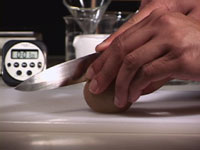 One characteristic of DNA that makes it difficult to observe—and make observable to students—is its size. DNA is a molecule that is about 1 million times smaller than a millimeter! In the video, this molecule was made visible by extracting a great amount of it from the cells of a Kiwi fruit—which has cells that make this easy. This is a summary of how to extract DNA and make it visible in this way.
One characteristic of DNA that makes it difficult to observe—and make observable to students—is its size. DNA is a molecule that is about 1 million times smaller than a millimeter! In the video, this molecule was made visible by extracting a great amount of it from the cells of a Kiwi fruit—which has cells that make this easy. This is a summary of how to extract DNA and make it visible in this way.
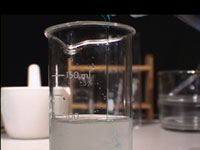
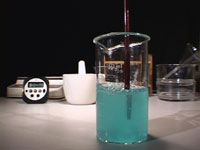
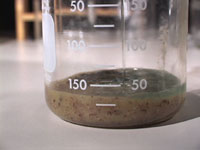
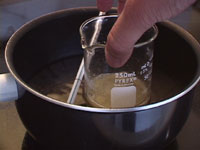
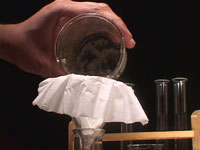
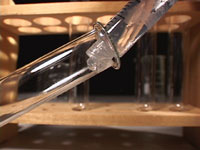
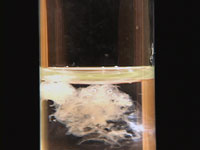
 Dr. Sigal Klipstein is a fellow in the Department of Obstetrics, Gynecology, and Reproductive Biology at the Beth Israel Deaconess Medical Center in Boston. She has received two fellowships, one in medical ethics at Harvard Medical School, and the other in Reproductive Endocrinology and Infertility at Boston IVF and the Beth Israel Deaconess Medical Center. Dr. Klipstein has lectured in both gynecology and medical ethics at the Harvard Medical School, and has authored or co-authored over 10 original articles. She is a member of the New England Fertility Society, the American Society of Reproductive Medicine, and the Society of Reproductive Endocrinology and Infertility.
Dr. Sigal Klipstein is a fellow in the Department of Obstetrics, Gynecology, and Reproductive Biology at the Beth Israel Deaconess Medical Center in Boston. She has received two fellowships, one in medical ethics at Harvard Medical School, and the other in Reproductive Endocrinology and Infertility at Boston IVF and the Beth Israel Deaconess Medical Center. Dr. Klipstein has lectured in both gynecology and medical ethics at the Harvard Medical School, and has authored or co-authored over 10 original articles. She is a member of the New England Fertility Society, the American Society of Reproductive Medicine, and the Society of Reproductive Endocrinology and Infertility.
BSCS’s Science T.R.A.C.S. (Teaching Relevant Activities for Concepts and Skills) engages young learners in science and technology through active, inquiry-oriented experiences guided by the National Science Education Standards and the Benchmarks for Science Literacy.
Through investigations into the weather, the Sun, the Moon, the stars, plants and animals, electrical systems, ecosystems, and much more, students not only develop an awareness of the world around them, but also an understanding of how that world works. Students also learn to work together as reliable members of a scientific team—a great way to make sure everybody in the group is involved and successful.
With BSCS Science T.R.A.C.S., students are partners with their teachers in the assessment process. Within each lesson, students check their own understanding individually or with their team. For more information, contact:
Kendall/Hunt Publishing
1-800-542-6657
http://www.kendallhunt.com